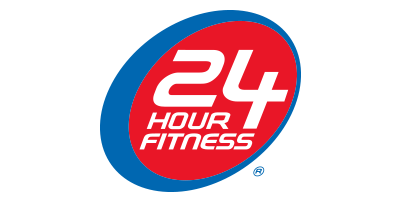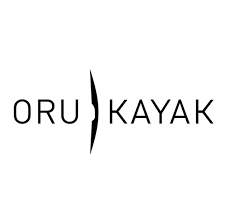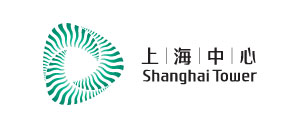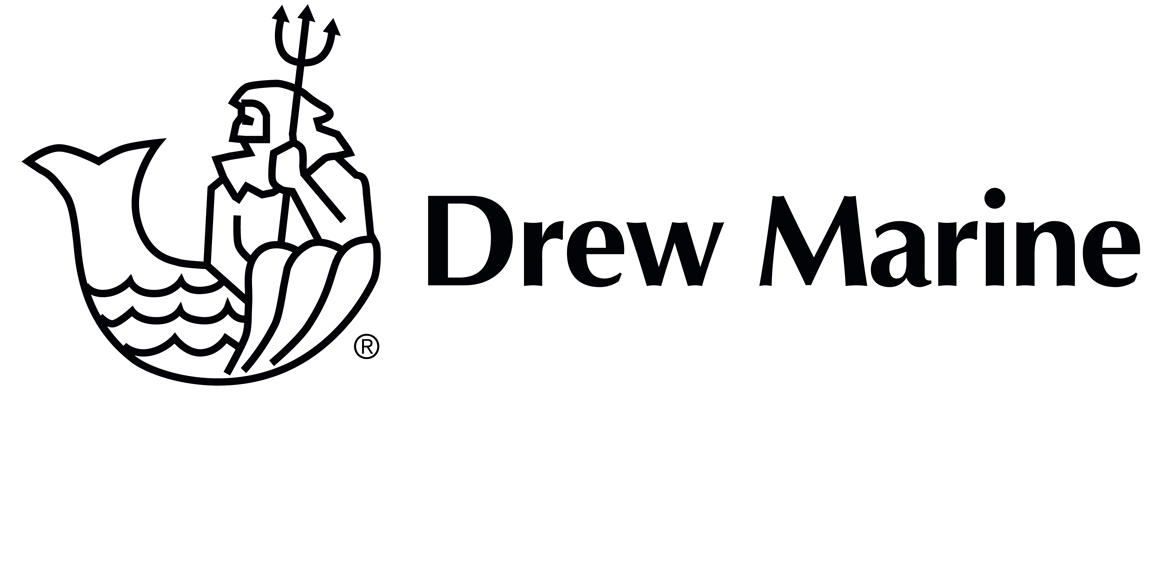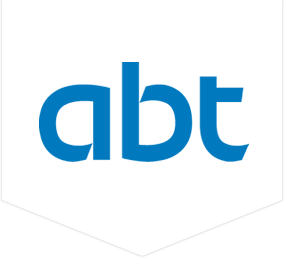Sorting
Deployments found: 76
“We have an opportunity to establish a new bar across the industry by delivering personalized digital interactions to our members that are available 24 hours a day, at home, on the road or in the gym,” said Frank Napolitano, president, 24 Hour Fitness. “It’s not an easy feat to achieve this with nearly 4 million members. Adobe is empowering us to create mass consumer personalization that scales, all utilizing the Microsoft Dynamics 365 platform. In doing so, we are better positioned to serve our members the workouts and health and fitness guidance they truly want and need.”
24 Hour Fitness is undertaking a journey to digitally transform its operations by combining functional departments to provide a single view of members and guests, messaging, and performance. Integrated cloud solutions from Adobe and Microsoft will help 24 Hour Fitness with scale, security and outreach along with AI and machine learnings to streamline its business and connect more deliberately to its members.
“Adobe and Microsoft are at the center of how we bring in relevant data, draw intelligent insights, and then how we act upon those insights across all our channels holistically,” said Tom Lapcevic, executive vice president and chief marketing officer, 24 Hour Fitness. “Our mission is to help people improve their lives every day through fitness, both inside and outside our clubs. So, whether it be email communications with a member, a mobile push notification or an SMS communication, we make sure that all our channels are in sync with what the needs of that individual are. It’s about giving every one of our members and guests a better and more personalized experience — and ultimately the results they desire.”
24 Hour Fitness already leverages Adobe Campaign for email, SMS and mobile push messaging, and Adobe Target for personalization across channels. Integration with Microsoft Dynamics 365 for Sales will enable 24 Hour Fitness to leverage sales data for member and guest insights, providing a single view of the customer that can be used to personalize experiences. For example, 24 Hour Fitness can customize offers, such as personal training recommendations based on loyalty, interests and geography. In addition, the 24 Hour Fitness 24GO custom coaching platform, powered by Adobe Experience Manager for content management and delivery, combined with Microsoft Dynamics 365 provides custom workouts, at-home programming, progress and goal tracking, and class schedules — all within a single dashboard. As well, the monthly digital magazine 24Life offers experts to help you think, eat, move and recover better.
“24 Hour Fitness is at the forefront of delivering exceptional personalized customer experiences across new customer acquisition all the way through delivering ongoing member services,” said Alysa Taylor, general manager, Microsoft Business Applications & Industry Group. “Together with Adobe, we’re dedicated to empowering digital transformation with 24 Hour Fitness and are proud to join them in their efforts to develop amazing experiences that can revolutionize their industry and further engage their members.”
“Delivering personalization at scale is the holy grail when it comes to how fitness companies engage with members,” said Dave Welch, vice president, Microsoft Solutions, Adobe. “24 Hour Fitness is able to achieve precisely this by harnessing the unique advantages of Adobe and Microsoft’s joint solutions. This can be a game-changer that truly transforms the member experience.”
At Adobe Summit 2018 last month, Microsoft and Adobe outlined new native technology integrations between Adobe Experience Manager and Microsoft Azure, Adobe Campaign and Microsoft Dynamics 365, and Adobe Analytics and Microsoft Power BI. The companies together serve more than 60 global brands today, empowering enterprises to compile customer insights, creating a single view of the customer that can be used to personalize experiences across marketing touchpoints. More information on these joint solutions can be found here.
The project involves the collaboration of a global team, including: • Shanghai Tower Construction & Development— owner/developer • Gensler—design architect • Architectural Design and Research Institute of Tongji University—local design institute • Thornton Tomasetti—structural engineer • Cosentini Associates—MEP engineer • Shanghai Construction Group—general contractor • Shanghai Installation Engineering—mechanical and electrical general contractor • Shanghai Xiandai Engineering Consultants— design management consultant • Autodesk Consulting—BIM strategy, training, and implementation consultant “Because Shanghai Tower is such a complex building, it could not be represented accurately with typical software or design methods,” says Jiliang Chen, deputy chief architect and deputy director of the project operations department at the Architectural Design and Research Institute of Tongji University. “One of the most challenging issues is the coordination of the extended design team,” adds Yi Zhu, senior principal and general manager at Thornton Tomasetti. The solution To help meet the ambitious goals set for the building, the Shanghai Tower owner required the implementation of a Building Information Modeling (BIM) process using Autodesk BIM solutions for the design and construction of the Shanghai Tower. The project team relies on a combination of Autodesk® Revit® Architecture, Autodesk® Revit® Structure, and Autodesk® Revit® MEP software for the tower’s design and documentation. The team is also using Autodesk® Navisworks® Manage software for coordination and collaboration, Autodesk® Ecotect® Analysis software for sustainable design analysis, and traditional AutoCAD® software for drawing production. “From a property owner’s perspective, BIM provides an excellent tool for the design, construction, management, and investment control of the entire project,” says Gu. Transforming work processes Early on, the owner engaged Autodesk Consulting to provide BIM strategy and implementation consulting services, as well as application training. Autodesk Consulting began its effort by helping the owner develop a BIM strategy and deployment plan for the project, and retooling design and construction workflows to support BIM-based processes. The team created detailed plans for project collaboration and document management, as well as defining the BIM deliverables for the entire project lifecycle. Autodesk Consulting also helped the owner implement an on-site BIM application environment for a local project team of over 50 members, including owner personnel and key project participants from the extended global project team. In addition, Autodesk Consulting provided software training and ongoing technical and BIM coaching support. “By combining Autodesk’s BIM technology and the deep expertise of Autodesk Consulting, we have been able to successfully transition to BIM much faster. As a result, this project has set new standards for the information management of construction projects in China,” says Gu. Integrating the design The extended architectural and structural teams—with designers in offices around the world—shared their design models, enabling them to collaborate and contribute insights about the design in the context of the project. In the construction phase, the local project team, working from temporary offices near the construction site, routinely shared its models for project coordination and collaboration. This communication of design data resulted in a natural coordination of the project as it unfolded. In addition, the team used both Revit and Navisworks Manage software for formal clash detection. “We used Revit Architecture software to design and model the tower and then shared those models with our mechanical, electrical, and structural consultants,” explains Michael Peng, associate senior designer at Gensler. “Autodesk Revit provided a common platform for our design partners, giving the team a more accurate representation and deeper understanding of the project,” adds Jun Xia, principal and regional design director at Gensler. “BIM accelerated our whole design process, enabling our engineers to access design data and geometric sizes directly from the building models, and to use thatinformation for calculation and analysis,” says Zhu.
Improving design communication The tower’s iconic twisting shape and dualskinned facade were extremely difficult to convey using traditional 2D approaches, making modelbased design vital for the project’s success. “BIM helped us visualize the tower in 3D and analyze the design for improved decision making,” says Xia. “For example, we used the Revit design model with the reflection analysis features of Ecotect software to analyze the glare from the tower throughout the city. This helped the design team optimize the outer curtain wall—even down to the position and angle of individual pieces of glass—to minimizelight pollution.” “During design, BIM was indispensable for coordinating the major design disciplines and producing construction documentation,” reports Chen. Model-based visualizations will also aid in the construction process. “By visualizing a 3D virtual building, we can better monitor construction and gauge our progress against the schedule,” says Xiaoming Yu, deputy chief engineer and design supervision department manager for Shanghai Installation Engineering. “In fact, we require BIM deliverables from all the subcontractors and equipment suppliers. And during construction, it will be much easier for the workers to understand construction drawings that contain a combination of traditional views such as plans and sections, as well as 3D views and visualizations of complicated areas.” Enhancing coordination The project team used the Revit platform for early coordination of the major design disciplines. In the construction phase, the team is combining the Revit design models and the fabrication models in Navisworks for whole project coordination. “As construction proceeds, BIM is helping us coordinate the subcontractors’ fabrication models, leading to a better quality design and the avoidance of rework costs,” says Chen. “For example, the tower’s basement has already been built, and comprises five stories and 170,000 square meters of space,” says Gu. “During design development, we found only seven clashes. During construction, there were no clashes at all. It would be very difficult if not impossible to get results like that without BIM.” Conserving more energy A central and attractive feature of the tower’s design is its transparent skin, which creates ventilated atriums that naturally conserve energy by moderating the atrium’s air temperature. “Green building and sustainable design were a common goal for the designers, as well as the property owner,” says Xia. “Model-based design was essential, as many aspects of our performance-based design were realized through simulations and analyses,” adds Peng. For example, during the design phase the project team used the Revit Architecture model for whole-building energy analysis, giving the designers quantitative feedback on building energy performance. “We shared this information with our owners and consultants to better inform our design decisions and trade-offs,” says Peng. Saving building materials The building shape itself will produce the largest energy savings in the form of an efficient, costeffective structural frame. “Using Revit Structure, we produced more than 20 design options before settling on a structural system of super-columns, with outrigger trusses supported by an inner concrete tower,” says Zhu. The team kept iterating the design, including the rotation angle of the building’s cam-shaped outer skin, to analyze the structure’s resistance to wind and seismic loads. The result was well worth the effort. Gensler estimates that the building uses 32 percent less material than a conventional tower—saving material costs as well as the energy required to manufacture more steel and concrete. Extending the value of BIM for building lifecycle management. Improving construction efficiency Both the tower’s owner and its construction partners are requiring BIM models from all the project’s subcontractors to aid in construction coordination, planning, and digital fabrication. As an additional service, Autodesk Consulting also developed BIM submittal requirements for the owne —including the level of model detail required for coordination and construction planning—which were incorporated into requests for proposals for the Shanghai Tower. “By repurposing the design team’s digital building models for fabrication, and in turn using the subcontractors’ fabrication models for coordination, we are improving construction efficiency and reducing on-site rework and materials waste,” says Yu. “All the materials we use on-site are semifinished and ready for installation. The fabrication has already been done in the factories, which greatly improves our efficiency.”
Extending BIM to lifecycle management Even after construction is complete, BIM will still play a vital role for the Shanghai Tower. Shanghai Tower Construction & Development plans on using BIM for the facility’s ongoing operations and maintenance, as well as for emergency and property management. At the onset of its engagement, Autodesk Consulting created plans that detailed the as-built information and models that the owner will require for the tower’s lifecycle management. “We plan to extend the value of BIM to help our facility management staff plan efficiently and manage the building scientifically,” reports Gu. The result With approximately 48 floors of the building’s core completed in 2011, the Shanghai Tower is on schedule for occupancy in 2014. “BIM helped our team produce a high-quality project and avoid many on-site changes, which would waste time, materials, and manpower,” says Gu. “Autodesk BIM solutions enable the different design disciplines to work together in a seamless fashion on a single information platform—boosting work efficiency, reducing errors, and improving both project and building performance.”
- Stakeholders emails were being bombarded with spam
- Account compromise led to employees receiving targeted phishing emails
- Protected from spam, malware, and targeted spearphishing attacks
- Brand and reputation defended against account compromise and domain spoofing
- Rapid, easy deployment
Gifford explains, “If an account gets compromised and then that compromised account goes on to attack one of our partners, that’s not acceptable to me.”Therefore, DMARC was also something that needed to be implemented immediately. Gifford started looking for an email security solution that would address the gaps in Office 365, secure his users against targeted attacks, and protect Cape Air’s brand and reputation. He had heard about Barracuda and its security solutions, and when he watched a Barracuda Essentials and Sentinel demo, he liked what he saw. Cape Air was one of the earliest Barracuda Sentinel customers. Barracuda Sentinel has helped reduce incidents of account compromise by blocking web impersonation emails (e.g., emails that pretend to come from Office 365), which lead to the theft of employee credentials. Barracuda Sentinel also provides domain fraud visibility protection using DMARC authentication, which ensures that no one can hijack Cape Air’s brand.
Gifford says, “I think Sentinel is a ground-breaking program. The thing about AI is that it just gets better.”Barracuda Sentinel does an excellent job of catching phishing and spear phishing attempts, and Gifford couldn’t be happier. He describes Barracuda Sentinel as being “the best thing since sliced bread.” Before implementing Barracuda’s email protection, Cape Air faced a lot of spam and their users were flooded with phishing and spear phishing attacks. Cape Air has seen an enormous drop in the number of email attacks since it adopted Barracuda’s email solutions. Phishing and spear-phishing attempts to trap unaware and innocent users are a thing of the past, and almost 100% of all virus and malware traffic is blocked.
“My complaints from end users have dropped significantly,” Gifford says.Cape Air has had no further incidents since it started using Barracuda’s email protection. Gifford says he’s been happy ever since.
- Suffered Cryptolocker ransomware attack
- Business-critical data encrypted
- Risk of significant cost, lost business, and damaged corporate reputation
- Encrypted files identified and deleted
- Affected files restored from backup
- No ransom paid
- Up and running again in one hour
“The Barracuda Cloud subscriptions give us extra peace of mind. Even if our on-site backups are somehow compromised or destroyed, our data will be completely secure and easy to restore,” says Murray.Murray’s appreciation for Barracuda products goes beyond Backup. He and his team also use Barracuda Web Security Gateway to secure web traffic and monitor web usage by Hayward Tyler’s users.
“We had a SonicWall UTM product that we felt wasn’t performing as we had hoped. Since replacing it with the Barracuda Web Security Gateway, we’ve seen a marked improvement. It’s very powerful, but it’s also very easy to configure and manage.”Hayward Tyler Group PLC has built its reputation over 200 years by delivering products and solutions that fulfill critical functions reliably and effectively in demanding, dynamic environments. Allowing that reputation to be put at risk by a ransomware attack is simply unacceptable. To protect the company’s reputation, data, business, and personnel, A.J. Murray relies on Barracuda Backup and Barracuda Web Security Gateway.
Even better, team members are reporting real phishing emails that got past tools like secure email gateways (SEGs). With such good results, we went straightaway into using Cofense Triage and Intelligence as well. We don’t want team members to spend a moment thinking, okay, this email I got — is it really a phish? Even if it’s an internal email, we tell them to report it and Triage will take care of it. Cofense Reporter sends our SOC analysts a clean set of emails, properly formatted, with all the information they need. Then Triage handles noise reduction, so analysts spend time only on genuine phishing threats.
When they look at an email, they can easily see which other team members received it and, if necessary, pull it from their inboxes. We also sometimes see clients whose emails have been compromised and used in phishing attacks. Our team members are familiar with the email addresses but they don’t click, because they know the language is odd or something else is off. In one instance, when we notified the client they were able to alert their entire customer base within a day. Normally, when we reach out to compromised clients they aren’t aware of the problem. This has happened often enough that our clients, along with our internal teams, see the benefit of what we’re doing. Our security team likes the Intelligence product because it’s based on emails that bypassed security rules. The team also says the intel correlates with what they see. Some intelligence products flag these same threats, but not as quickly. The team’s overall opinion is they love the product—it’s really useful. My team in security awareness feels the same about Cofense PhishMe. We had used products from other vendors with not much success. We weren’t able to do monthly phishing simulations, so we had to settle for periodic simulations. As soon as we got on board with Cofense, we could easily run monthly exercises. That dropped our susceptibility rates pretty rapidly. Why is it important to do monthly exercises? Well, not doing it every month wasn’t working. We used to have susceptibility rates around 25%. While our rates have dropped, we also realized we would never get to zero clicks, so reporting is the key metric. Working with Cofense, we show value by helping to stop phishing attacks technology missed. It’s hard to get a dedicated budget for security awareness. But teams across the company understand what we’re doing. People talk about it, including the board of directors. They know that data protection is our number one risk.
Our program has received a lot of visibility and that’s been awesome. It’s really driven security awareness and made our company much more secure. By: Information Security Analyst, Global Financial Services Company
The ROI4CIO Deployment Catalog is a database of software, hardware, and IT service implementations. Find implementations by vendor, supplier, user, business tasks, problems, status, filter by the presence of ROI and reference.




